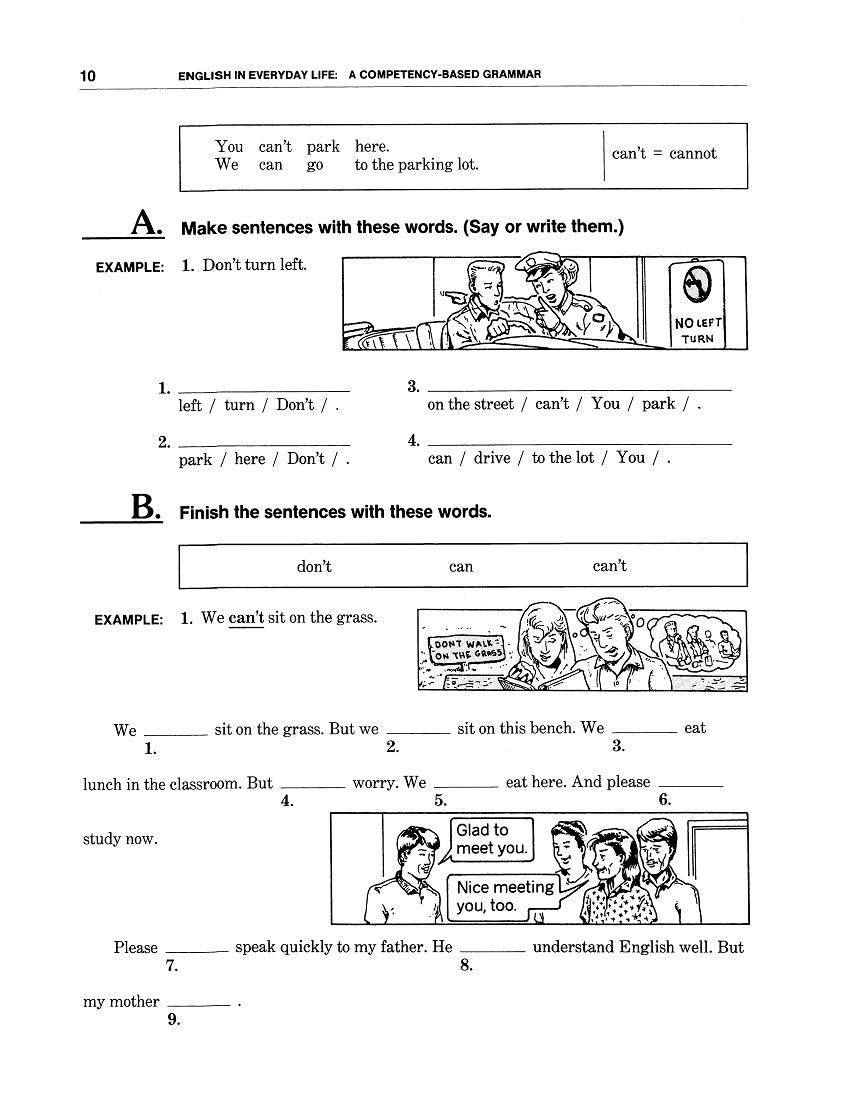1
/
of
4
Work/Life English
D-06.02 Tell Rules - Express Ability & Permission in CAN/CAN'T Sentences
D-06.02 Tell Rules - Express Ability & Permission in CAN/CAN'T Sentences
Regular price
$1.00 USD
Regular price
Sale price
$1.00 USD
Unit price
/
per
Parts Two & Three of Chapter 1 (“Getting There”) of WorkLife English Grammar 2: English in Everyday Life, pages 9-15
8 PAGES
Who It’s For: (Self) Teachers & Helpers at Beginning Learning Levels
Why It’s Useful: So much of everyday life revolves around what people are or aren’t allowed / able to do that English speakers want to learn how and when to use the modal verb can / can’t (before base verbs) as soon as they can. In the context of adult (ESL) education and how to get it, here are illustrated presentations, explanations, exercises, and expressive activities, all based on statement, yes/no question, and short answer patterns with modal + base verbs.
What You’ll Do:
[1] With participants, pantomime and read aloud the page 9 Part Two: Can / Can’t Strip Story “You can’t park here.” While commenting on its content (following rules & getting permission at school; assessing language ability), on pages 10-12, use the Grammar-Pattern Box to identify the features of Affirmative & Negative Modal Sentences: Subject + Verb Phrase (CAN/CAN’T before a Verb) + Adverb. Put sentence elements in order; fill in words; review subject pronouns; generate sentences to describe drawings and reality.
[2] In Part Three: Yes / No Questions & Answers on pages 13-15, understand and act out the Strip Story “Can you give us directions, please?” Note the changes in word order and intonation required by Yes / No Questions. Choose appropriate (subject vs. object) pronouns. To request and exchange real information about your school or educational situation, complete questions and answer them.
Couldn't load pickup availability








